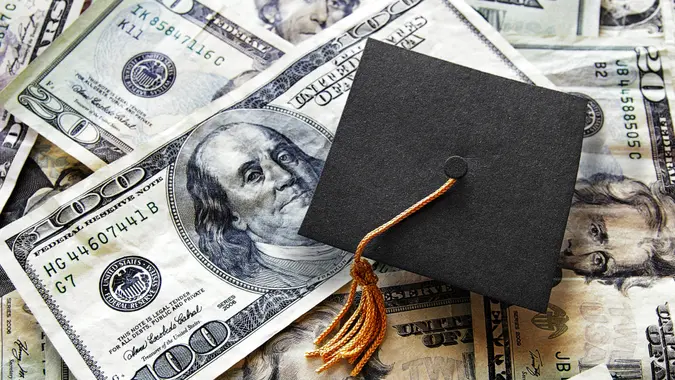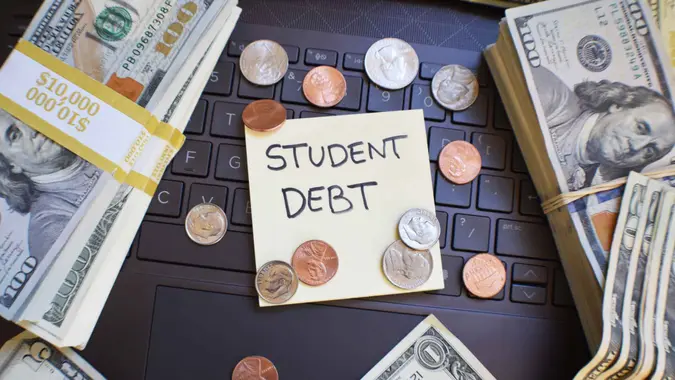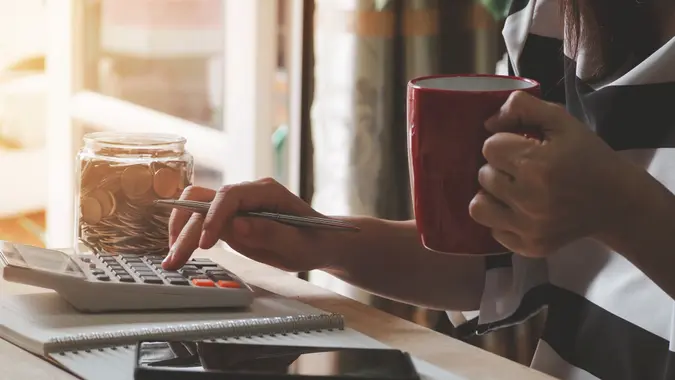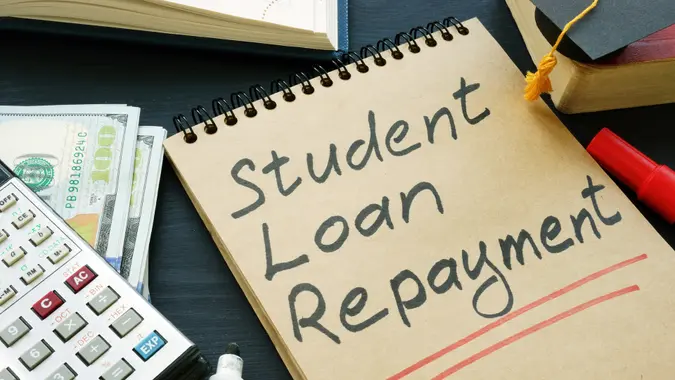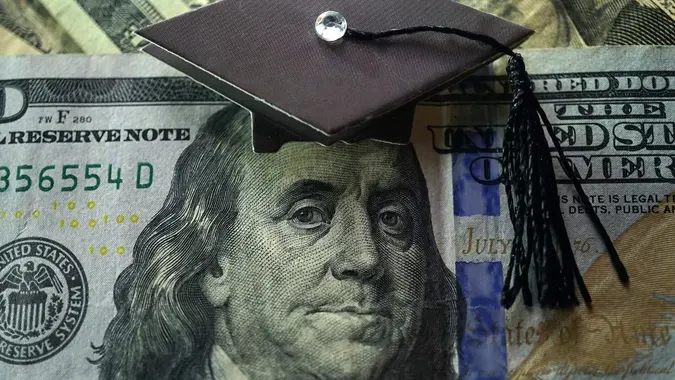Student Loan Forgiveness ‘Buyback’ Program Could Offer More Relief to Borrowers — Do You Qualify?

Commitment to Our Readers
GOBankingRates' editorial team is committed to bringing you unbiased reviews and information. We use data-driven methodologies to evaluate financial products and services - our reviews and ratings are not influenced by advertisers. You can read more about our editorial guidelines and our products and services review methodology.

20 Years
Helping You Live Richer

Reviewed
by Experts

Trusted by
Millions of Readers
According to Forbes, the Department of Education has rolled out a new pathway to student loan forgiveness for public service borrowers this fall.
The new option will allow borrowers in some specific circumstances to “buy back” certain deferment and forbearance periods so that they can count toward Public Service Loan Forgiveness, or PSLF. While the Public Student Loan Forgiveness (PSLF) Buyback Program has yet to be widely adopted, the new program aims to provide an alternative method of student loan forgiveness for PSLF borrowers.
Student Loan Relief via PSLF Buyback Program
The Public Student Loan Forgiveness (PSLF) program is a federal program aimed at borrowers whose line of work meets certain criteria. Borrowers who work at least 30 hours per week as an employee of a government organization or qualifying nonprofit can see total discharge of their remaining student loan balance after making 10 full years of qualifying payments (which equates to 120 qualifying payments).
While eligibility for the PSLF program has historically been very strict, the Biden administration implemented new rules in 2023 that make it easier for PSLF program applications to qualify for full student loan balance discharge. This includes allowing some forbearance and deferment periods, such as AmeriCorps forbearances, military-related deferments, hardship deferments and mandatory administrative forbearances to be included when calculating eligibility for loan discharge.
Other deferment and forbearance periods that weren’t included in the recent regulatory changes could potentially count toward PSLF through the new buyback program. This option allows borrowers to have these non-qualifying periods counted toward student loan forgiveness — if they pay the equivalent of what they would’ve at the time had they been enrolled in a qualifying PSLF repayment plan. Essentially, PSLF borrowers can pay for the periods in which they were not making payments in order to qualify for relief.
Guidelines for Student Loan Forgiveness Buyback
There are several important guidelines to keep in mind when considering this program. You can only buy back these months of deferment or forbearance if:
- Buying back these months will complete your total of 120 qualifying PSLF payments.
- You have approved qualifying employment for these same months.
- You still have an outstanding balance on your loan(s).
How Loan Forgiveness Amounts Are Determined Through the Buyback Program
In regard to qualifying deferment and forbearance periods on eligible federal student loans, the Education Department will require borrowers to pay the equivalent amount based on what their loan payment amount would have been during the deferment or forbearance for the past months you’re buying back.
In order to make payments, the PSLF program typically requires borrowers to be in either an Income Driven Repayment (IDR) plan, in which payments are based on their income, or a 10-year Standard plan. If a borrower was in a period of deferment or forbearance while on an IDR plan, the Education Department will base the buyback on the lower of the two monthly payments before or after the specified deferment or forbearance period. If the borrower wasn’t enrolled in an IDR plan during the deferment or forbearance period, they’ll be required to submit a copy of their tax return and family size details for the periods in question.
“Your payment amount will be based on the lowest IDR amount you were eligible for at the time of the deferment or forbearance,” the Education Department has announced. “If the 10-year standard payment is lower than your calculated IDR payment, then the 10-year Standard payment amount will be used.”
The purpose is to determine what the borrowers estimated monthly payments would have been at that time had they been enrolled in an IDR plan during the period that the borrower wants to buy back.
Education Department Encourages PSLF Borrowers To Wait for Account Adjustments
Currently, the Education Department is implementing an IDR Account Adjustment for PSLF borrowers. This adjustment allows many past periods of deferment and forbearance to possibly count toward student loan forgiveness for both IDR and PSLF borrowers. The Department’s review is already underway and will continue through summer 2024. They’re asking that borrowers wait on submitting buyback requests until this process is complete.
Borrowers who meet the criteria to qualify for the PSLF buyback program need to submit a request for PSLF reconsideration. Borrowers must include this specific language when submitting the request: “I have at least 120 months of approved qualifying employment, and I am seeking PSLF or TEPSLF discharge through PSLF buyback. Please assess my eligibility for PSLF buyback.”
Borrowers should also provide details on the exact months and years covered by their buyback request. You can always review your loan history and data on StudentAid.gov if you’re not sure.
More From GOBankingRates
 Written by
Written by  Edited by
Edited by 





